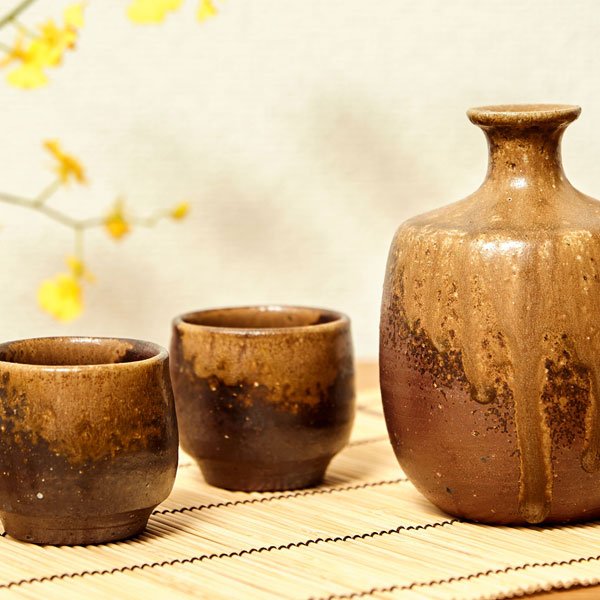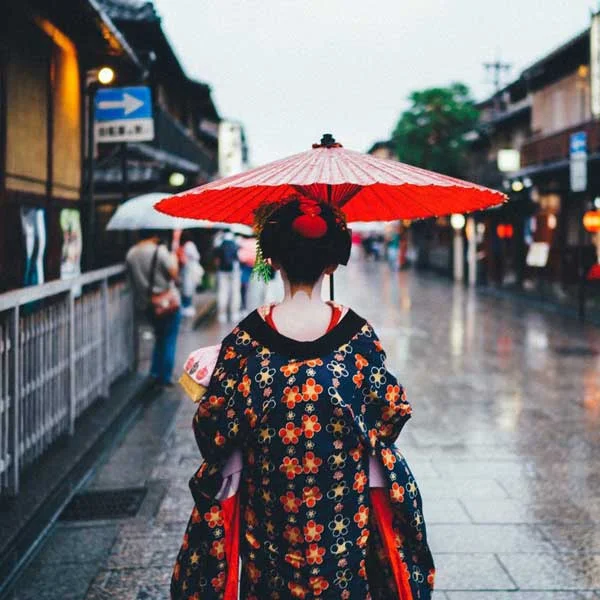Japanese Tea Caddy: 6 Things You Need to Know
by David McElhinney | Craft
Red Lacquer Tea Caddy, available at Japan Objects Store
Tea has a storied history in Japan. Not just because there are more than 100 tea varieties, but because of the traditional ceremony held when drinking it. A tea caddy is an essential tool for the Japanese tea ceremony. These elegant vessels, often lacquered and decorated with traditional motifs, are used to store matcha tea before its served to guests.
If you want to find out more about Japanese tea caddies and their role in the tea ceremony, read on.
1. What is a Tea Caddy?
Black Lacquer Tea Caddy, available at Japan Objects Store
Japanese tea caddies are a vital component in the slow and precise dance of sado or chado, both meaning the way of tea.
Ritualistic tea drinking was born in China, later adopted by Japan during the Kamakura period (1192-1333). It was largely the preserve of Zen monks until Sen no Rikyu, a 16th-century monk in the court of the warlord Toyotomi Hideyoshi, popularized the practice by focusing on its harmonious connection to nature and the simplicity in the objects used.
One of these objects was the tea caddy, which is a small, cylindrical or cuboidal cannister used for storing and serving tea, and if made correctly, for keeping it moist. There are now two main kinds of Japanese tea caddy: natsume (棗), usually wooden and used for thin tea; and chaire (茶入れ), usually ceramic and used for thick tea.
To find out more about some of the other items used during the Japanese Tea Ceremony, check out 19 Essential Japanese Tea Ceremony Utensils.
2. Where Does the Japanese Tea Caddy Come From?
Late Spring: Tea Ceremony by Shiro Kasamatsu, 1932
Under the influence of Sen no Rikyu, the utensils used in the tea became prized for their aesthetic value. The Yamanoue no Soji-ki, a book of secrets on tea utensils authored by a disciple of Sen no Rikyu, spoke of the Three Great Tea Caddies of the World: Hatsuhana, Narashiba and Nitta, cherished ceramic containers introduced from China to Japan. Toyotomi Hideyoshi had all three under his ownership at one stage, each of which had value exceeding that of an entire feudal domain.
As the arts become more prevalent in Japanese culture during the Edo period (1603-1868), the styles of and materials used to craft tea caddies exploded, turning caddy production into a thriving industry.
© Kaikado, Tin Tea Caddy
One of Japan’s premier tea caddy manufacturers was established much later, however, in 1875. The Kyoto-based Kaikado company grew to prominence during the Mejii era, which lasted until 1912, iterating upon traditional techniques with a new and imported material. Japan had opened its borders to the West after more than 250 years of isolation, engaging in trade with the US and the UK. Tinplate was imported from England, and Kaikado saw this as an ideal material for caddy manufacturing. 150 years after its inception, the company still produces long-lasting, intricate caddies for tea ceremony.
3. How Do You Use a Tea Caddy?
Cherrybark Tea Caddy, available at Japan Objects Store
Tea caddies are used for storing and serving matcha, and for their aesthetic presence, during a tea ceremony. You can also use them for everyday tea storage, but it’s worth checking whether they are airtight – natsume often aren’t, for example, unless paired with an inner lid. If not airtight, then its best to keep the tea elsewhere and transfer it to a caddie after grinding or prior to serving.
4. What are Japanese Tea Caddies Used With?
Matcha Tea Set, available at Japan Objects Store
There are several different utensils used during the tea ceremony. Here, we’ll outline a few of most important:
Chakin: a white hemp or linen cloth used to clean the chawan (tea bowl)
Chasen: a bamboo whisk used to mix the tea and water
Chashaku: a scoop used for transferring the tea, usually made from bamboo or ivory
Chawan: bowls for drinking the matcha tea – check out our handcrafted ceramic selection at Japan Obects Store
Hishaku: a bamboo ladle used to pour hot water into the tea
Kama: a cast iron or copper kettle used to heat the water (10 Things to Know About Cast Iron Kettles)
Sensu: a folding fan, kept closed during the ceremony, used for greetings and giving thanks
You don’t need all of these items to enjoy Japanese tea however. You can start with just the bowl, whisk and spoon, which you can purchase as a set.
5. How is a Tea Caddy Made?
Wooden Tea Caddies, available at Japan Objects Store
Tea caddies can be made from a variety of materials. We’ll cover some of the most popular styles below:
Wood: wooden tea caddies are usually made from cypress or cherry bark. An artisan will craft the wood into a cylindrical or sometimes cuboidal shape alongside a lid for placing on top of the caddy. Decorations are then added, including kinpaku (gold leaf); painted motifs, like flora, birds or scenes from nature; and urushi (lacquer).
Ceramic: ceramic caddies are thrown by master potters and baked in kilns. They often have an oblong shape, like a small flower vase, with a spiral pattern on the bottom of the caddy. These patterns are important in some forms of the tea ceremony and are created as the potter removes the clay from the wheel. Ceramic caddies are often rustic and imperfect, displaying the Japanese aesthetic quality of wabi sabi.
Tin: As mentioned, metal caddies were popularized in Kyoto during the late-19th century, crafted from highly malleable tin. They are prized for their simplistic yet slick designs, and are weather resistant and sturdy which protects the tea within. As tin oxidizes over time, the caddies change color, breathing new life into the aging products.
6. Where to Buy a Japanese Tea Caddy?
Black Lacquer Tea Caddy, available at Japan Objects Store
We’ve got a great selection of tea caddies, matcha bowls and other chado materials at the Japan Objects Store.
You can also visit venerable tea caddy manufactures when traveling in Japan. For wooden tea caddies, head to Inami, a town with 200 woodwork artisans in Toyama Prefecture. Ceramic towns have proliferated throughout the country; you’ll find rustic tea caddies in many of these, especially in Saga Prefecture, a heartland of Japanese pottery. And for tin caddies, head to the flagship Kaikado store and café in Kyoto City.













LIFESTYLE | July 28, 2023